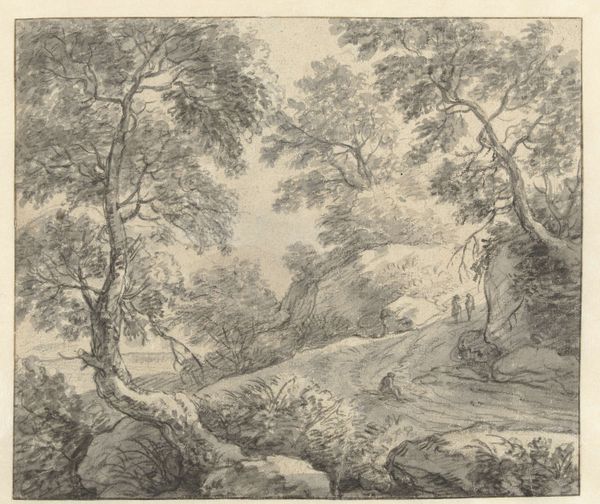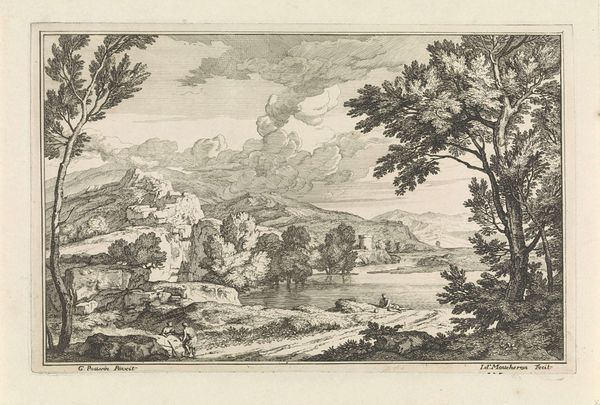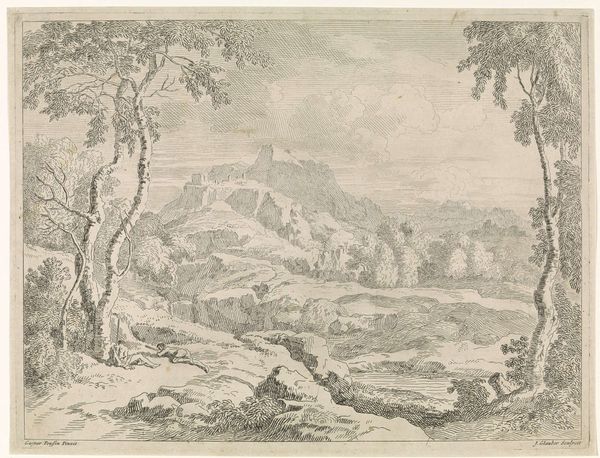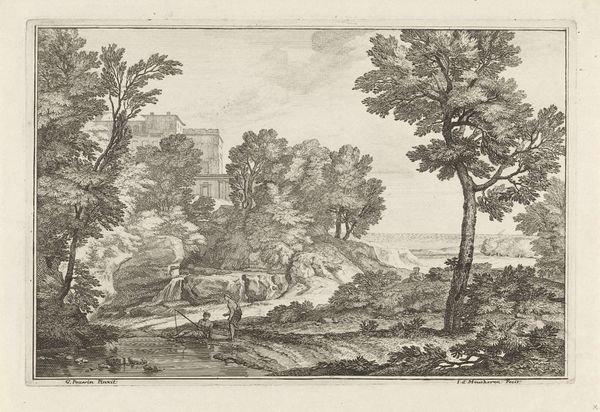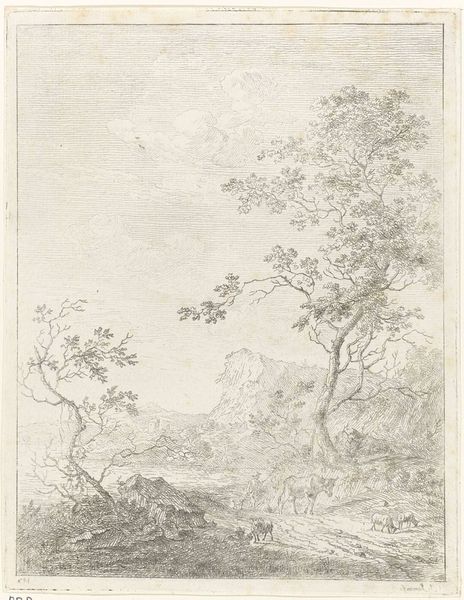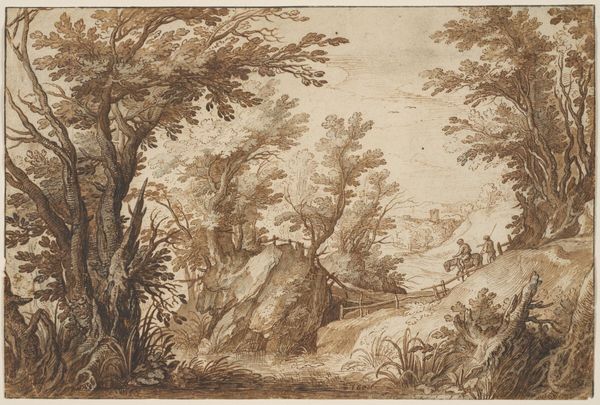
#
landscape illustration sketch
#
pen drawing
#
mechanical pen drawing
#
pen illustration
#
pen sketch
#
ink line art
#
linework heavy
#
pen-ink sketch
#
pen work
#
storyboard and sketchbook work
Dimensions: height 206 mm, width 282 mm
Copyright: Rijks Museum: Open Domain
Curator: Here we have "Arcadian landscape with a ruin and figures by a staircase," a pen and ink drawing by Jan van Huysum, made sometime between 1692 and 1749. What are your first thoughts? Editor: There’s a dreamy quality here. Despite being a drawing, it evokes a feeling of nostalgia and contemplation of idealized nature. A delicate, but powerful melancholia. Curator: It’s fascinating how Van Huysum utilizes the classical motif of Arcadia, a symbolic space often representing pastoral innocence. I notice the strategic placement of the ruined architecture. How do you interpret that ruin? Editor: The ruin certainly provides a stark contrast. I believe its inclusion critically interrogates this notion of innocence. Ruins have never been neutral; they’re potent signifiers of historical power structures. We’re seeing this landscape, surely, from a position of colonial dominance. This imagery projects a possessive gaze on this Arcadian idyll. Curator: It certainly poses questions of ownership and the inevitable decay of civilizations. Observe how the staircase intersects the ruined building and the gathering of figures. Stairs often symbolize hierarchical social mobility and religious ascensions. Do you perceive a particular social dynamic within the gathering on the staircase? Editor: Possibly. I’m struck by how detached those figures seem, almost posed. And yet, their presence is what gives the ruin life, what projects fantasies onto the space. It's in seeing these ruins and picturing ideal civilizations here, a critical element to this narrative takes place. Curator: The light in this landscape emphasizes particular components of its symbolic message. It catches the sculptural figures along the staircase, rendering them stark. In effect, this suggests a continuity with forms from an idealized past. But, at the same time, that brightness also draws attention to the building's dilapidated state. I imagine it allows the viewer to contemplate their place within this continuity, what is at stake here. Editor: It is as if the drawing embodies the human impulse to project ideal notions onto our history. It is a beautiful and disquieting representation of selective memory. It also emphasizes the ever-present dialogue between art, power, and place.
Comments
No comments
Be the first to comment and join the conversation on the ultimate creative platform.


